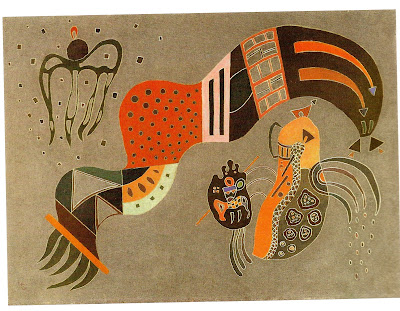The fact that he's drawn multiple faces on top of each other suggests to me that he clearly isn't satisfied in the way those two comments might imagine him to be. Not necessarily because he's obsessive, or so mad that he can't see that he's doing rather well. He's going somewhere. Trying to find something, or fix something, perhaps. He's inside his process in a way that no-one can imagine from the outside. And he's working at it so consistently that he probably doesn't even notice that he's just produced a number of quite skillful drawings, and some lines and marks that go somewhere beyond skill. He doesn't stop to congratulate himself, just keeps going, trying to work it out. Whatever it is.
This makes me think of the following two pictures.
This first one is pretty big on the skill thing, it seems to me. And though it's quite conventional, it also seems to have something a bit more than skill; a bit of a feel to it, an atmosphere or something. It's a painting that most people would feel they could relate to, and have a feeling about. By contrast, this next one some people might find a bit difficult.
What interests me about these two paintings is that one was done at the beginning of a painter's career, and the other very near the end. The contrast seems to me to be a brilliant example of how the non-painter's frequent fixation on likeness and technique is based on a set of judgements that are very far away from whatever judgements the artist themselves seems to be making. It's interesting that someone who had the kind of skill and technique that you can see in the first painting, after a long painting life, ended up wanting to paint something that is, indeed, not dissimilar to some kinds of aboriginal or indigenous art. I haven't yet really worked out what I think this means, but it seems to point towards something rather interesting about process, and work, from the point of view of artists themselves (the artist here is Kandinsky). I'm pretty sure it says something about the focus and development of European art, too....



No comments:
Post a Comment